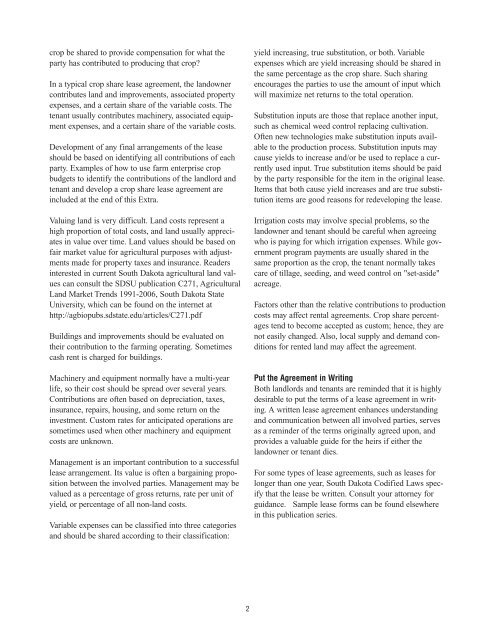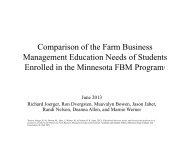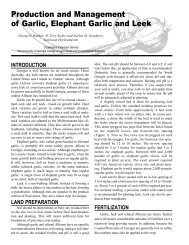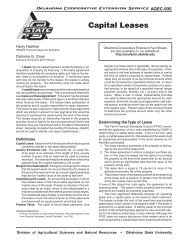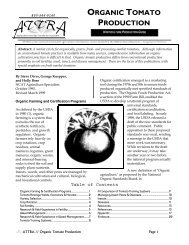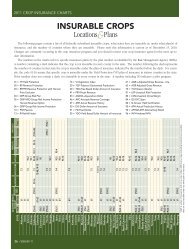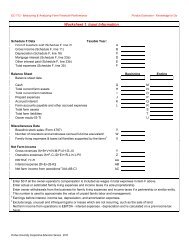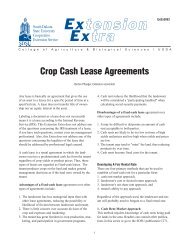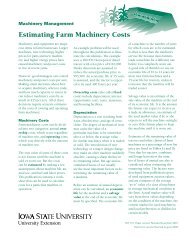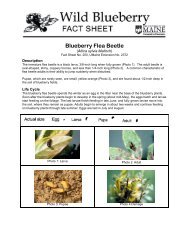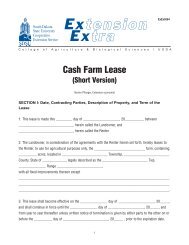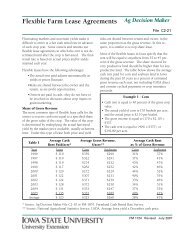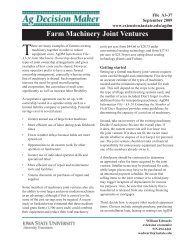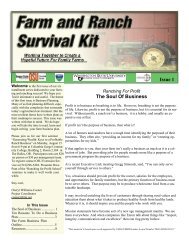Crop Share Lease Agreements - National Ag Risk Education Library
Crop Share Lease Agreements - National Ag Risk Education Library
Crop Share Lease Agreements - National Ag Risk Education Library
Create successful ePaper yourself
Turn your PDF publications into a flip-book with our unique Google optimized e-Paper software.
crop be shared to provide compensation for what the<br />
party has contributed to producing that crop?<br />
In a typical crop share lease agreement, the landowner<br />
contributes land and improvements, associated property<br />
expenses, and a certain share of the variable costs. The<br />
tenant usually contributes machinery, associated equipment<br />
expenses, and a certain share of the variable costs.<br />
Development of any final arrangements of the lease<br />
should be based on identifying all contributions of each<br />
party. Examples of how to use farm enterprise crop<br />
budgets to identify the contributions of the landlord and<br />
tenant and develop a crop share lease agreement are<br />
included at the end of this Extra.<br />
Valuing land is very difficult. Land costs represent a<br />
high proportion of total costs, and land usually appreciates<br />
in value over time. Land values should be based on<br />
fair market value for agricultural purposes with adjustments<br />
made for property taxes and insurance. Readers<br />
interested in current South Dakota agricultural land values<br />
can consult the SDSU publication C271, <strong>Ag</strong>ricultural<br />
Land Market Trends 1991-2006, South Dakota State<br />
University, which can be found on the internet at<br />
http://agbiopubs.sdstate.edu/articles/C271.pdf<br />
Buildings and improvements should be evaluated on<br />
their contribution to the farming operating. Sometimes<br />
cash rent is charged for buildings.<br />
Machinery and equipment normally have a multi-year<br />
life, so their cost should be spread over several years.<br />
Contributions are often based on depreciation, taxes,<br />
insurance, repairs, housing, and some return on the<br />
investment. Custom rates for anticipated operations are<br />
sometimes used when other machinery and equipment<br />
costs are unknown.<br />
Management is an important contribution to a successful<br />
lease arrangement. Its value is often a bargaining proposition<br />
between the involved parties. Management may be<br />
valued as a percentage of gross returns, rate per unit of<br />
yield, or percentage of all non-land costs.<br />
Variable expenses can be classified into three categories<br />
and should be shared according to their classification:<br />
yield increasing, true substitution, or both. Variable<br />
expenses which are yield increasing should be shared in<br />
the same percentage as the crop share. Such sharing<br />
encourages the parties to use the amount of input which<br />
will maximize net returns to the total operation.<br />
Substitution inputs are those that replace another input,<br />
such as chemical weed control replacing cultivation.<br />
Often new technologies make substitution inputs available<br />
to the production process. Substitution inputs may<br />
cause yields to increase and/or be used to replace a currently<br />
used input. True substitution items should be paid<br />
by the party responsible for the item in the original lease.<br />
Items that both cause yield increases and are true substitution<br />
items are good reasons for redeveloping the lease.<br />
Irrigation costs may involve special problems, so the<br />
landowner and tenant should be careful when agreeing<br />
who is paying for which irrigation expenses. While government<br />
program payments are usually shared in the<br />
same proportion as the crop, the tenant normally takes<br />
care of tillage, seeding, and weed control on "set-aside"<br />
acreage.<br />
Factors other than the relative contributions to production<br />
costs may affect rental agreements. <strong>Crop</strong> share percentages<br />
tend to become accepted as custom; hence, they are<br />
not easily changed. Also, local supply and demand conditions<br />
for rented land may affect the agreement.<br />
Put the <strong>Ag</strong>reement in Writing<br />
Both landlords and tenants are reminded that it is highly<br />
desirable to put the terms of a lease agreement in writing.<br />
A written lease agreement enhances understanding<br />
and communication between all involved parties, serves<br />
as a reminder of the terms originally agreed upon, and<br />
provides a valuable guide for the heirs if either the<br />
landowner or tenant dies.<br />
For some types of lease agreements, such as leases for<br />
longer than one year, South Dakota Codified Laws specify<br />
that the lease be written. Consult your attorney for<br />
guidance. Sample lease forms can be found elsewhere<br />
in this publication series.<br />
2


